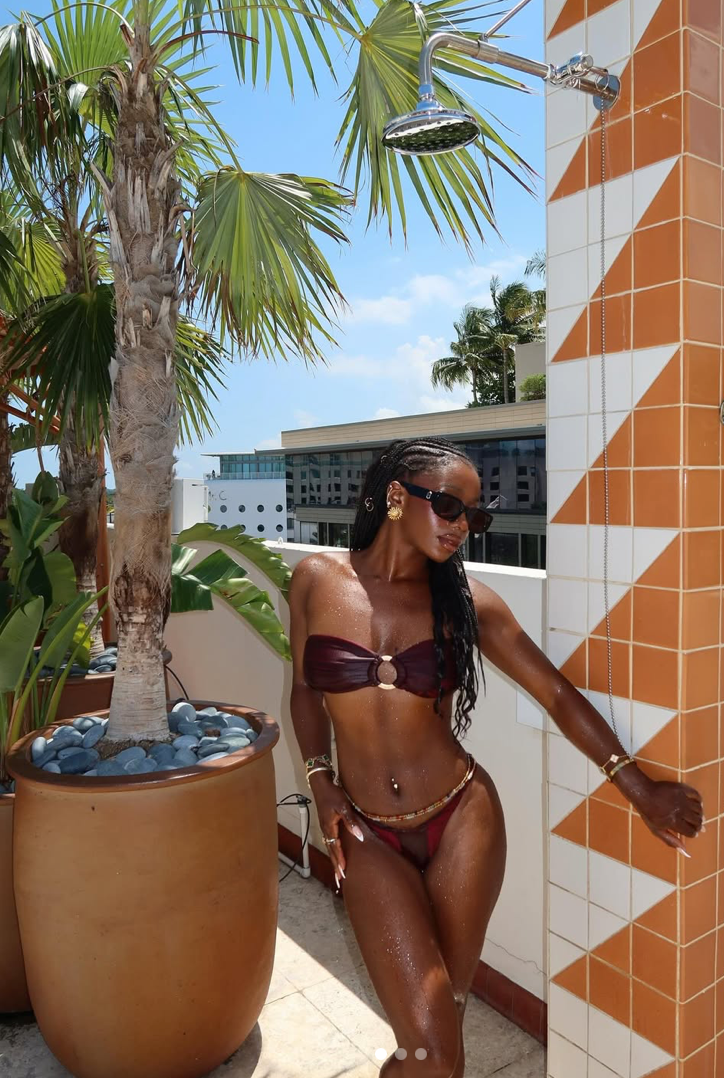
Aba Asante is a rising beauty and fashion influencer with Ghanaian roots. At just 21, she carries a deep connection to her Akan heritage—a connection that shines through in the way she wears and speaks about waist beads. In Twi, one of the languages of the Akan people, waist beads are sometimes called ayo or Krobo beads. And for Aba, they are a symbol of womanhood, beauty, and family legacy.
In this interview, Aba reflects on what it meant to receive her first strand from her grandmother, how waist beads shape her self-perception, and the traditions that continue to ground her in her culture.
The First Beads: A Grandmother’s Gift
“My earliest memory of waist beads is seeing women in my family wearing them when I was little. I always thought they were so beautiful and wondered if I’d get to wear them one day.”
That day came when her grandmother gifted her a strand that marked a turning point.
“The first set I wore was a gift from my grandmother. They were simple but meaningful because she said they symbolized growth and protection for me as a young woman.”
The gift was more than decorative—it was an initiation into womanhood and tradition.

Beauty and Confidence
Waist beads helped Aba develop a more grounded and affirming relationship with her body.
“They’ve taught me to appreciate my body more. Wearing them makes me feel connected to my culture, feminine, and confident in who I am.”
In her family, body image was framed by a blend of modesty and cultural pride.
“Growing up, conversations about women’s bodies were often focused on modesty and pride. My family emphasized the importance of self-respect and embracing our natural beauty.”

Symbolism and Spirituality
For Aba, waist beads are meaningful on many levels.
“For me, they’re all three. Aesthetically, they’re beautiful and make me feel feminine. Culturally, they connect me to my heritage, and spiritually, they remind me of the strength and wisdom passed down by the women in my family.”
She comes from a lineage of waist bead wearers, and she honors that by continuing the tradition in her own way.
“Yes, my grandmother, mother, and aunts all wear waist beads. It’s like a tradition that connects us as women.”
And in her culture, waist beads often mark pivotal life milestones.
“Waist beads are often gifted during significant moments, like a girl’s coming of age, weddings, or even after childbirth, to celebrate milestones.”

Everyday Ritual
Today, Aba wears her beads as part of her daily life—for beauty, for connection, and for joy.
“Yes, I’m wearing waist beads right now because they make me feel beautiful!”
Quick-Fire Round with Aba
Tie-on or clasped waist beads?
“Tie-on.”
Thin or chunky strands?
“Thin strands.”
Charms or no charms?
“No charms, I prefer them simple so they don’t get caught on my clothes.”
Visible or hidden waist beads?
“Both!”
Do you cut them off when you’re ready for a new set, or wait for them to break naturally?
“I wait for them to break naturally. It feels like the beads are signaling it’s time for a new chapter and I’ve grown.”

Whether she’s creating content, serving looks, or just being herself online, Aba wears her waist beads with pride. For her, they’re a quiet yet powerful symbol of womanhood, growth, and heritage—passed down through generations of Ghanaian women.
Want to keep up with Aba’s journey? Follow her on Instagram at @abakasante to tap into her world of beauty, fashion and lifestyle.

